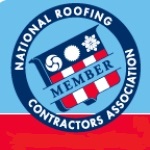Hicksville Roofing: Article About Seasonal Roof Maintenance
Also known as insulation baffles, rafter vents are installed so that soffit vents remain clear with no way for outside air to get into the attic. They are available in four-foot lengths and widths of 14 1/2 and 22 1/2 inches, placed in the attic between rafters at the meeting point of floor and ceiling.
Question answered for our Hicksville roofing customers: What factors besides attic ventilation can contribute to a home's energy efficiency?In addition to the obvious importance of good attic ventilation, other factors that are important to getting high energy efficiency out of your home include the color of your shingles, the amount of sun exposure your home gets, and the insulation in your attic and the rest of your home.

Through the seasons, there are distinct roof maintenance tips you should heed to keep your home's exterior looking and functioning well. Your roof should be built to take on everything Mother Nature can dish out, from extreme cold and snow to intense heat and rain. Don't skip a season of maintenance because you could be looking at some major repair bills down the line. Your Hicksville roofing professional is here to ensure you don't miss a beat when it comes to your roof maintenance checklist.
Spring
The flowers blooming and the birds singing should be your first cue to inspect your roof. With warmer temperatures and the arrival of the first buds on the trees comes the rain, sometimes in torrents. While you may need that rain to feed your vegetable garden, you don't need it to damage your roof. While it's smart to hire a roofing professional to perform a roofing inspection, you can also do an inspection on your own from the safety of the ground. Get a good pair of binoculars and walk around your property with a checklist. Check to ensure all the structures look intact, from flashing to chimneys to vents. Are there any loose, buckling or curling shingles? Do you see rot, algae or mold? Inside, are there water spots or mold on your ceilings or in your attic? All of these can be signs of roof leaks. Nipping those leaks in the bud now will avoid bigger problems as the spring rains start to saturate your home. Now is a good time to check your gutters and downspouts and ensure they are free of debris.
Have a question regarding EPDM rubber roofs or siding repairs? Ask Long Island Roofing of Hicksville NY.
Summer
As the sun beats down and the weather heats up, turn your attention to the attic. Your roof needs to "breathe" so that the hot air can escape and keep the temperature in your home cool. Ensuring your ventilation system is in good working order will help with energy efficiency, as your air conditioning system won't have to work so hard to keep up with demands. Take a look at the vents such as rafter vents, and clear any blockages. Nothing should be blocking the air's escape, such as debris and insulation.
Fall
With the heat of the summer gone and the days getting crisper, start your winter preparation inspection. Trim any overgrown vegetation, cleaning debris off the roof and gutters as well. If the leaves have already started falling, you'll need to clear out your gutters more than once this season. Check your attic's ventilation system again and install additional ones if necessary to guard against ice dams and icicles. To guard against icing, add more insulation to your attic as needed.
Winter
There's not much you can do in the way of structural improvements or repairs during winter. However, the you can keep an eye on snow and ice accumulation. With storm after storm dumping more and more snow on your roof, this can get heavy fast. Have a roofing professional clear the snow and ice off your roof using a roof rake and other special equipment.









